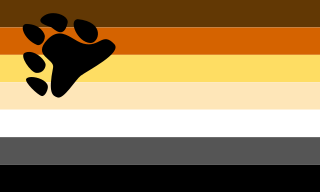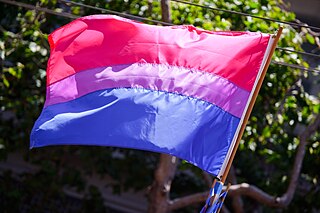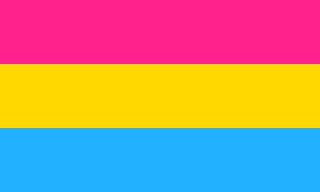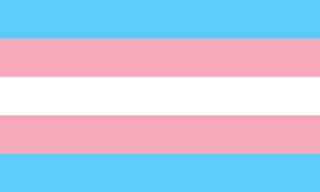 W
WThe International Bear Brotherhood Flag was designed to represent the bear subculture within the LGBT community. The colours of the flag are meant to include the colours of the furs of animal bears throughout the world, not necessarily referring to human skin and hair colour tones: Dark brown, orange/rust, golden yellow, tan, white, gray, and black. The flag was designed with inclusion in mind. The gay bear culture celebrates secondary sex characteristics such as growth of body hair and facial hair, which is typically considered a "bear" trait.
 W
WThe bisexual pride flag was designed by Michael Page in 1998 to give the bisexual community its symbol comparable to the gay pride flag of the larger LGBTQ+ Community. He aimed to increase the visibility of bisexuals, both among society as a whole and within the LGBTQ+ community. The first bisexual pride flag was unveiled at the BiCafe's first-anniversary party on December 5, 1998.
 W
WThe gay pride flag of South Africa is a gay pride symbol that aims to reflect the freedom and diversity of the South African nation and build pride in being an LGBTQ South African. It was registered as the flag of the GLBTI Association of South Africa in 2012 and is not an official national symbol of South Africa.
 W
WThe intersex flag was created in July 2013 by Morgan Carpenter of Intersex Human Rights Australia.
 W
WThe leather pride flag is a symbol used by the leather subculture since the 1990s. It was designed by Tony DeBlase, and was quickly embraced by the gay leather community. It has since become associated with leather in general and also with related groups such as the BDSM community.
 W
WThe pansexual pride flag is a pink, yellow and blue flag, designed as a symbol for the pansexual community to increase its visibility and recognition, and distinguish itself from bisexuality.
 W
WThe New Pride Flag is a flag design by Julia Feliz, a two spirit, AfroTaino artist, to integrate the historic and modern-day struggles of the LGBT movements with racism. The design contains the colors of the Trans Pride Flag, to which brown and black diagonal stripes are added, and this is then superimposed on the classic LGBTIQA+ Pride Rainbow Flag.
 W
WThe rainbow flag is a symbol of lesbian, gay, bisexual, transgender (LGBT) and queer pride and LGBT social movements. Also known as the gay pride flag or LGBT pride flag, the colors reflect the diversity of the LGBT community and the "spectrum" of human sexuality and gender. Using a rainbow flag as a symbol of gay pride began in San Francisco, but eventually became common at LGBT rights events worldwide.
 W
WThe transgender pride flag is a light blue, pink and white striped flag, designed by American trans woman Monica Helms in 1999, and is a symbol of the transgender community, organizations, and individuals.